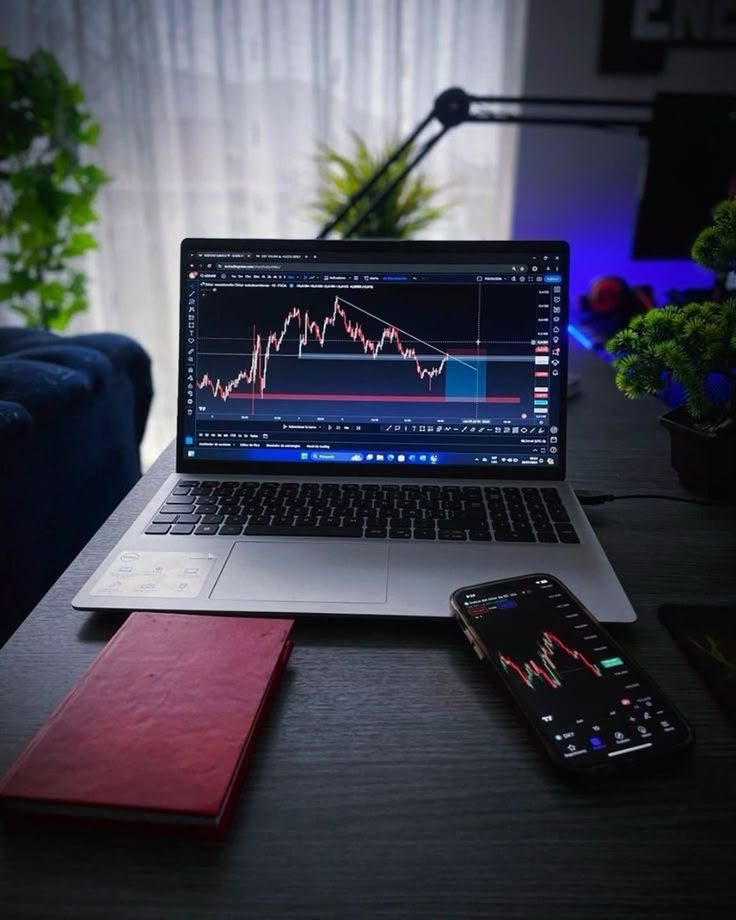Introduction
Using technical indicators is a common approach in trading, but relying on just one can often lead to false signals. To improve the accuracy of your entries and exits, combining multiple indicators—each serving a different analytical purpose—can significantly enhance your decision-making process.
In this article, we’ll explore how to effectively use multiple indicators together to confirm trade setups, avoid overtrading, and increase your win rate.
Why Use Multiple Indicators?
Each indicator is built to analyze a specific market element:
- Trend indicators show the direction of the market.
- Momentum indicators measure the strength of a trend.
- Volatility indicators assess the level of price fluctuation.
- Volume indicators reflect the intensity of trading activity.
By combining indicators from different categories, you reduce the chances of making decisions based on false or incomplete signals.
The Golden Rule: Don’t Overload Your Chart
Using too many indicators can lead to analysis paralysis and conflicting signals. The key is to choose a few complementary tools and understand how they work together.
Ideal setup: 2 to 3 indicators that cover:
- Trend
- Momentum
- Confirmation (volume or price behavior)
Popular Indicator Categories and Examples
1. Trend Indicators
- Moving Averages (MA, EMA)
- Parabolic SAR
- ADX (Average Directional Index)
2. Momentum Indicators
- RSI (Relative Strength Index)
- Stochastic Oscillator
- MACD (Moving Average Convergence Divergence)
3. Volatility Indicators
- Bollinger Bands
- ATR (Average True Range)
4. Volume Indicators
- On-Balance Volume (OBV)
- Chaikin Money Flow
- Volume Moving Average
Example Strategy: Combining 3 Indicators
Tools Used:
- 50 EMA (Trend)
- RSI (Momentum)
- Volume Bar (Confirmation)
Buy Setup:
- Price above 50 EMA – confirms uptrend.
- RSI above 50 but below 70 – indicates strong but not overbought momentum.
- Rising volume on bullish candles – confirms real buying interest.
Sell Setup:
- Price below 50 EMA – confirms downtrend.
- RSI below 50 but above 30 – bearish momentum without oversold condition.
- Rising volume on bearish candles – confirms selling pressure.
This simple trio helps validate each trade setup from different perspectives, improving reliability.
Avoid Redundancy: Don’t Use Similar Indicators Together
Some indicators are based on the same calculation logic. For example:
- MACD and RSI both measure momentum.
- Stochastic and RSI often give similar overbought/oversold signals.
Using both together may not add much value and could lead to repeated or conflicting signals. Instead, diversify your indicators by category.
Divergence + Indicator Confirmation
Another advanced method is using divergence in one indicator and confirming it with another.
Example:
- Price makes a higher high, but RSI shows a lower high = bearish divergence.
- Confirm with MACD histogram starting to turn down = stronger sell signal.
This dual confirmation can be powerful for spotting early reversals.
Multiple Time Frame Analysis
Using the same indicators across different timeframes adds depth to your analysis:
- Use higher timeframes (4H, Daily) to confirm the overall trend.
- Use lower timeframes (15m, 1H) for precise entries.
Example:
- Daily chart shows RSI crossing 50 = long-term momentum shift.
- 1H chart shows MACD bullish crossover and price above EMA = trigger entry.
This approach filters out noise and aligns your trades with the bigger picture.
Best Practices When Using Multiple Indicators
- Understand Each Indicator’s Role
- Know exactly what each tool measures to interpret signals correctly.
- Backtest Before Using Live
- Combine your indicators and test the setup on historical data to see how often it works.
- Keep Charts Clean
- Avoid clutter. Too many indicators make reading the chart difficult and decision-making slower.
- Set Clear Rules
- Define exactly what conditions must be met to enter/exit a trade.
- Example: “Only buy when price is above 200 EMA, RSI is above 50, and volume is increasing.”
- Use Stop Losses and Take Profits
- Even with multiple confirmations, always manage risk with proper SL/TP placement.
Common Mistakes to Avoid
- Overfitting: Creating a system that works only on historical data but fails in real markets.
- Chasing signals: Entering trades based on incomplete setups just because one indicator flashed a signal.
- Ignoring market context: Indicators should support, not replace, your understanding of price action and news events.
Conclusion
Combining multiple indicators can significantly improve the accuracy and confidence of your trading decisions. The key lies in selecting indicators that complement each other—each bringing a unique perspective to the analysis. Whether you’re trend-following, swing trading, or scalping, a well-structured multi-indicator system can help filter out noise, reduce false signals, and boost your performance.
Take time to backtest your setup, practice on a demo account, and always prioritize clarity and discipline over complexity. In trading, less is often more—but only when it’s structured wisely.


